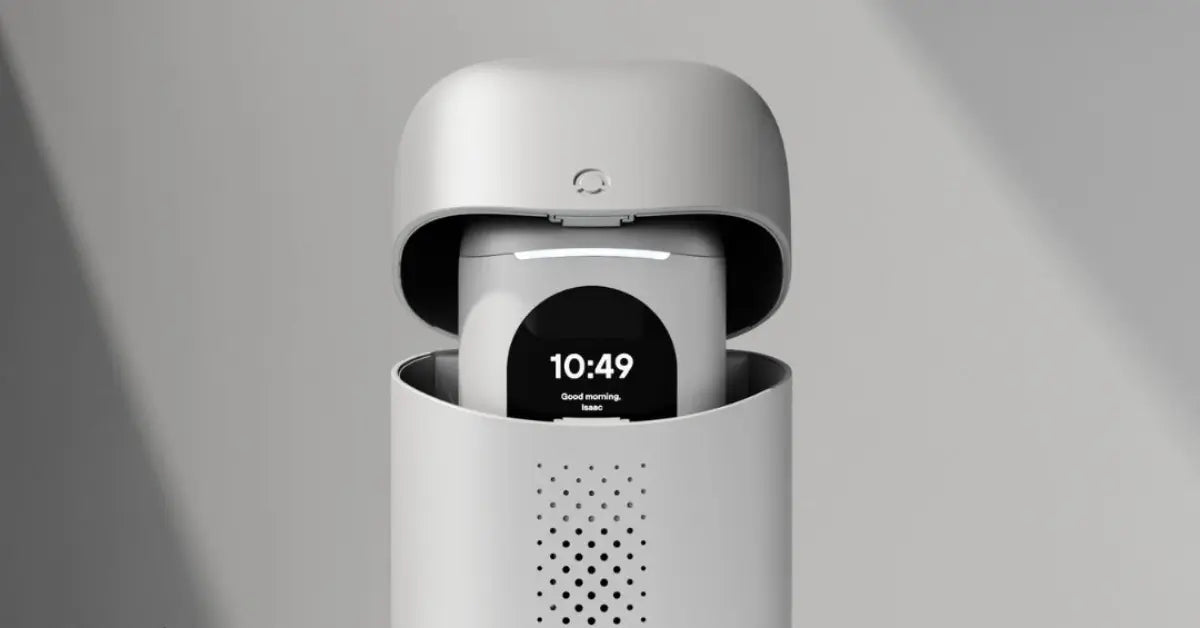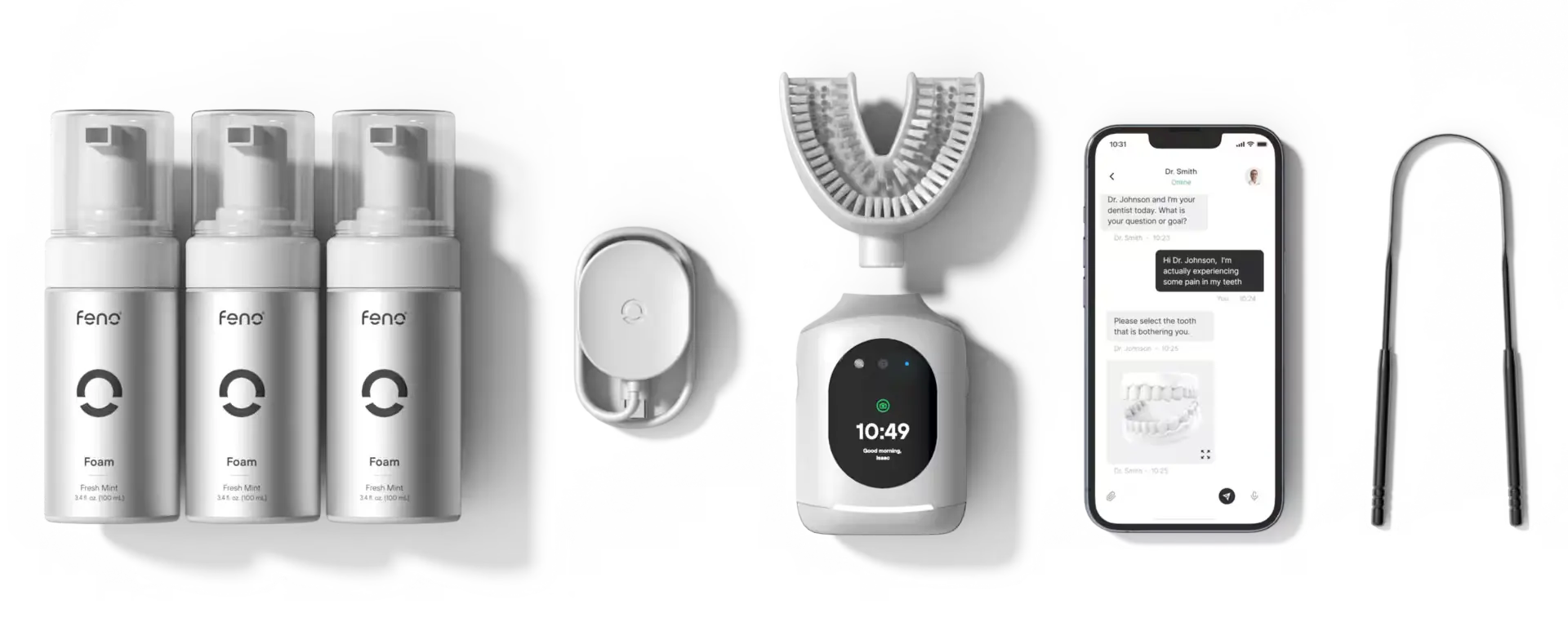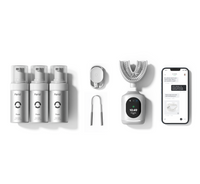
12 min read
Real-Time Feedback: Improving Brushing Techniques with Smart Brushes
The integration of technology into everyday items has revolutionized many aspects of our lives, and oral hygiene is no exception. Smart dental devices have emerged as frontrunners in enhancing the way we care for our teeth. Equipped with AI in oral hygiene, these gadgets offer tailored suggestions and improvements in brushing techniques, making oral care more effective. This evolution from traditional to technologically advanced tools like the best smart toothbrush reflects a broader shift towards personalized healthcare, where devices adapt to individual needs for optimum outcomes.
How AI Enhances Brushing Habits
Detecting Brushing Patterns
One of the standout features of intelligent electric toothbrushes is their ability to detect brushing patterns and adjust the brushing pressure accordingly. Such capability is crucial for preventing gum damage due to excessive force, which can lead to receding gums and other dental issues. By monitoring how hard you brush, these electric toothbrushes with sensors can prompt you to lighten your touch or even redirect your technique to avoid overbrushing, thus safeguarding your dental health while ensuring thorough cleaning.
Timing and Duration Tracking
Proper brushing isn’t just about how you brush; it’s also about how long you brush. Smart brushing with AI includes the integration of timers and trackers that ensure you're brushing for the recommended two minutes. This feature helps users adhere to dental best practices without the guesswork. Additionally, these smart devices often include section timers that prompt users to move to different areas of the mouth, guaranteeing that each section gets enough attention and aiding in the overall effectiveness of your dental care routine.
Personalized Adjustments Based on User Habits
The real power of smart dental hygiene lies in its ability to learn from your habits and make personalized suggestions for improvement. Whether it’s adjusting the duration you spend on your molars or the intensity needed for your canines, these smart toothbrushes tailor their feedback to your specific needs. A personalized approach not only optimizes your daily brushing but also evolves as your techniques improve or your oral health needs change, making smart dental devices an invaluable ally in maintaining dental health.

Types of Smart Electric Toothbrushes Offering Real-Time Feedback
Intelligent Electric Toothbrushes
Equipped with a suite of advanced features designed to enhance the brushing experience, these devices utilize smart toothbrush advantages like real-time pressure sensors, location tracking, and motion analysis to guide users through their dental care regimen. The feedback provided by these toothbrushes ensures that every angle of every tooth receives proper attention, maximizing the effectiveness of each brushing session. With features that adjust to your personal brushing style, these toothbrushes are at the forefront of dental technology.
U-Shaped Sonic Toothbrushes
It represents a breakthrough in streamlined oral care. This design surrounds the teeth with bristles, allowing for simultaneous cleaning of all surfaces, which dramatically reduces brushing time while maintaining high cleanliness standards. The sonic technology in this u-shaped toothbrush for adults uses high-frequency vibrations to remove plaque and debris effectively, offering a comprehensive clean that traditional brushes can't match. The ergonomic design is also particularly beneficial for individuals with mobility issues or those who find traditional brushing techniques challenging.
Real-Time Feedback Features and Their Benefits
Tracking Progress with Connected Apps
The integration of smart dental devices with mobile apps enhances the user experience by tracking dental hygiene progress over time. These apps collect data from every brushing session, enabling users to monitor improvements, identify consistent problem areas, and adjust their habits accordingly. The real-time data provided by these apps is vital for setting and achieving oral health goals, offering a level of insight that was previously unavailable in traditional brushing methods.
Pressure and Position Alert
These also provide instant alerts if too much pressure is applied or if the brush is held at an inefficient angle, protecting users from common brushing errors that can lead to dental harm. Such features are crucial for promoting safe brushing practices and ensuring that users do not damage their enamel or irritate their gums. By correcting these habits, users can enjoy a healthier mouth and a more effective brushing routine. In addition to performance tracking, smart toothbrush apps offer personalized tips and suggestions to enhance brushing effectiveness. Based on the analysis of your brushing style, the app might suggest focusing more on the back molars or adjusting the brush angle for improved gum health. These tailored tips help transform ordinary routines into optimized sessions that boost oral hygiene over time.
Visualizing Daily Improvements
Visual feedback from smart brushing with AI transforms the abstract concept of "better brushing" into tangible, understandable metrics. Users can see graphical representations of their brushing coverage, frequency, and technique improvements, making it easier to stay motivated and engaged with their oral health routines. A visual aid is particularly effective for children and those who benefit from seeing their progress charted in a clear and concise manner.

How Smart Brushes Support Better Oral Health Outcomes
Reducing Plaque and Gum Issues
Precision in brushing is key to preventing gum disease and reducing plaque buildup. Personalized oral health includes the ability to target specific areas with the optimal amount of pressure and motion, minimizing the risk of gum irritation and ensuring that plaque is effectively removed without causing harm to the teeth or gums. This targeted approach not only improves immediate oral health but also contributes to healthier gums and teeth over time.
Long-Term Health Benefits
As emphasized previously, these devices go beyond simple cleaning, using sensors and AI to guide users in real time, ensuring optimal brushing technique and thoroughness. Below, we expand on the critical advantages of smart toothbrushes and how they impact health and dental care:
- Improved Diagnostic Capabilities: Historical data can help identify patterns that suggest potential oral health issues, such as areas that frequently receive insufficient cleaning. When shared with dental professionals, this information assists in early detection, enabling preventative treatments before issues worsen. Using these devices consistently can build a wealth of data that supports more accurate assessments, empowering both users and dental practitioners to stay proactive in oral health management.
- Tailored Dental Treatments: If a user consistently misses certain areas, a dentist can recommend techniques or specific tools to address this issue. With the ability to review brushing data, dental professionals can create treatment plans that directly address the user’s unique needs, leading to more effective and personalized care. This level of personalization improves treatment outcomes, helping users achieve better results in their oral health journey. Patients also report higher satisfaction with treatments tailored to their habits and needs, reinforcing the value of smart toothbrushes in modern dental care.
- Lower Long-Term Dental Costs: By preventing oral diseases through thorough cleaning, users are less likely to need costly dental procedures, such as fillings, root canals, or gum disease treatments. Investing in a smart toothbrush can be seen as a proactive approach to oral health, with a potential return on investment that extends far beyond the initial purchase. Over time, consistent use of a smart toothbrush can lead to substantial savings, especially for those who may otherwise be at higher risk of dental issues. Reduction in dental expenses also allows users to allocate their resources toward other areas of health and wellness.
- Increased Longevity of Dental Work: For individuals with dental work like crowns, implants, or braces, proper oral hygiene is crucial in protecting these investments. Smart toothbrushes are designed to help users clean every part of their mouth, including difficult-to-reach areas around dental work. A thorough cleaning routine helps prolong the life of dental work, reducing the likelihood of early replacement or repair. By ensuring that dental investments are well maintained, smart toothbrushes help users get the most value and longevity from their dental treatments.
- Better Overall Health: Poor dental health is linked to systemic conditions, including heart disease and diabetes. Smart toothbrushes, by encouraging consistent and effective oral hygiene, help users maintain a level of oral health that supports broader health outcomes. Reducing bacteria and inflammation in the mouth lowers the risk of bacteria entering the bloodstream, which could impact other body systems. For individuals focused on holistic health, investing in a smart toothbrush is a step toward improving not just oral health but also overall physical well-being.
Incorporating a smart toothbrush into a daily routine offers both immediate and long-term benefits, making it a worthwhile investment in one’s health. The advanced features of these devices promote better brushing habits, support disease prevention, and even contribute to lower healthcare costs over time.
Choosing the Right Smart Toothbrush with Feedback Features
Key Considerations
Key factors include the type of technology used, the extent of data tracking, the user-friendliness of the accompanying app, and the adaptability of the device to different ages or dental conditions. Technology can influence battery life, noise levels, and the brush's weight, so it’s crucial to select a model that complements daily brushing habits comfortably. Some advanced models even offer multiple cleaning modes—such as whitening, sensitive, or deep clean—to further tailor the brushing experience. These versatile settings ensure that users with diverse needs, including those with dental work like braces or implants, can maintain effective oral care. Parents can also benefit from tracking features when monitoring children’s brushing habits. Certain toothbrushes include kid-friendly modes and feedback systems tailored to younger users, making it easier to instill effective habits from an early age.
The app's user-friendliness and device adaptability are paramount, as they determine the toothbrush's usability across different age groups and dental conditions. A straightforward, intuitive app can empower users to engage with their oral health journey more actively. Some devices are specifically designed to cater to diverse age groups, featuring adjustable brushing intensities and brush heads suitable for various dental conditions, such as sensitive gums or braces. This adaptability is crucial for households with multiple users, as it allows each person to benefit from a single device while customizing the experience to suit their needs. Potential buyers should prioritize toothbrushes that support their oral health goals.
Evaluating Sensor Capabilities and App Functionality
The effectiveness of a smart electric toothbrush largely depends on the capabilities of its sensors and the functionality of its associated app. High-quality sensors can detect the amount of pressure applied, the angles of brushing, and even the coverage of each brushing session. The app should not only display this data in an accessible format but also provide actionable insights and regular updates to keep up with advancements in dental care practices.
Balancing Cost with Long-Term Oral Health Benefits
While toothbrush with AI devices often come with a higher upfront cost compared to traditional toothbrushes, the long-term benefits they offer can justify the investment. Users should consider how features like real-time feedback and health tracking can reduce the need for professional dental treatments and improve overall oral health. An investment in a high-quality smart toothbrush can lead to significant savings on dental care over time, not to mention the benefits of maintaining a healthy, confident smile.
Gamification of Brushing
Gamification is particularly beneficial for children, helping to instill healthy habits early on, while adults can enjoy the motivation boost it provides. These smart features create a sense of achievement and encourage consistent, effective brushing, supporting overall dental health in a fun way:
- Scoring Systems: This feature makes brushing more interactive by giving users points based on how well they brush, including factors such as pressure and consistency. Each session’s score can be viewed on a companion app, where users can track their progress over time. Scoring systems are particularly engaging for children, who find it motivating to improve their scores each time they brush. For adults, it serves as a subtle reminder to brush thoroughly, ensuring all areas of the mouth are covered. Ultimately, scoring systems encourage a higher standard of brushing by making users aware of their performance, inspiring them to improve daily.
- Achievements: Achievements add a layer of excitement to brushing by rewarding users for reaching specific milestones, such as brushing consistently for a week or improving their brushing technique. This also appeals to adults who enjoy setting personal goals, as they can track their progress and see tangible results. By working toward achievements, users are more likely to develop a positive association with brushing, which can lead to long-lasting habits. Rewards transform brushing from a chore into an engaging activity, fostering a commitment to oral hygiene through fun, achievable goals.
- Reminders: For children, reminders serve as a gentle nudge, teaching them the importance of a routine without parental intervention. Adults benefit as well, especially on busy days when brushing can easily be forgotten. Reminders can also include tips on timing, like suggesting a full two-minute session to maximize cleaning effectiveness. Over time, these reminders reinforce the importance of routine, encouraging users to brush twice daily.

The added fun and motivation can make a significant difference in long-term oral health, reducing the risk of dental issues and improving overall hygiene. Gamification in oral care shows that even small changes in routine can lead to meaningful improvements, supporting a healthier smile for years to come.
The future of oral hygiene looks bright with devices like the u-shaped smart toothbrush, and their continued evolution will likely bring even more exciting developments to our bathroom counters. These innovations promise to make caring for our teeth more effective and attuned to our individual health needs than ever before.
Share




